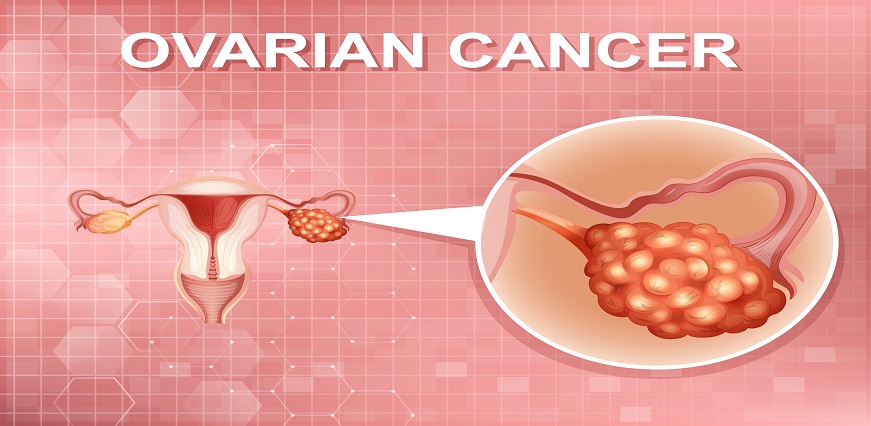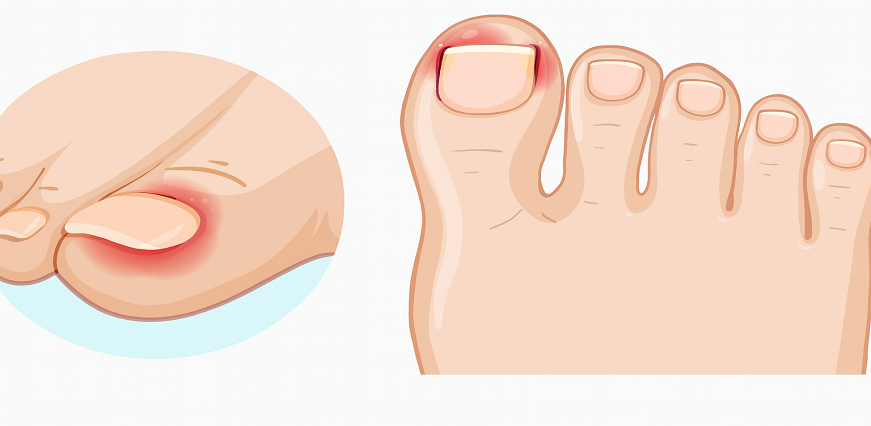In a human’s lifetime, the cells in their body grow, divide, and die constantly. However, when the cells begin to grow abnormally or do not die when they are supposed to, it can lead to several problems, like the formation of tumours. These tumours can either be cancerous or non-cancerous. Whereas a non-cancerous or benign tumour does not spread to other parts of the body and remains at one place, continuing to grow slowly over time, a cancerous or malignant tumour is aggressive and grows rapidly, spreading to other parts of the body as well. Cancer that starts in the ovaries, peritoneum, or fallopian tubes of a woman’s body is referred to as ovarian cancer and the tumours formed under this condition are referred to as cysts. In the early stages, detection of ovarian cancer is a little complicated as the symptoms of ovarian cancer may not appear until the later stages and if they do appear, they can easily be confused with premenstrual symptoms or those of irritable bowel syndrome or transient bladder infections.
The Early Signs of Ovarian Cancer
Symptoms of ovarian cancer and cysts are very subtle and can be mistaken for those of other health conditions as well. In some cases, the very first stage of ovarian cancer may display symptoms of a cyst, in many cases, symptoms do not occur until the condition reaches advanced stages. However, some of the most common symptoms of ovarian cancer or a cyst that one may look out for include:
- Discomfort or pain in the pelvic area.
- Unusual menstrual bleeding or vaginal discharge, especially after menopause or outside the menstrual cycle.
- Frequent need for urination.
- Changes in eating habits or a loss of appetite.
- Bloating or an increased abdomen size.
- Sudden, unexplained weight gain or loss.
- Unusual back pain that gets worse over time.
As the early signs of ovarian cancer may just as easily be symptoms of some other condition, people tend to ignore them. However, if the symptoms continue to occur for more than two weeks, it is advisable that the person consults with their doctor to find out if they are symptoms of an ovarian cyst.
What are the Causes of Ovarian Cysts or Cancer?
While the exact causes of ovarian cysts are not known, there are several risk factors that can increase one’s chance of developing the condition.
- Age: Ovarian cancer can affect women of any age but is more common in older women after menopause.
- Family History: Women with a history of ovarian cancer in their close family are at a higher risk of developing the condition.
- Breast Cancer: Women with a history of breast cancer are also at a higher risk of being diagnosed with ovarian cancer.
- Reproductive History: Women who have never been pregnant or had their first child after the age of 35 are associated with a higher risk of ovarian cancer. A history of fertility treatments also increases the risk of ovarian cancer.
- Hormone Therapy: Receiving hormone therapy after menopause.
- Obesity: Being overweight also increases one’s risk of ovarian cancer.
While there are several factors that increase one’s risk of getting ovarian cancer, there are also instances of people developing the condition even in the absence of any risk factor.
Screening for Ovarian Cancer
As there are hardly any symptoms of an ovarian cyst or cancer, detection of the condition becomes difficult in the earlier stages. There are no tests for screening for ovarian cancer, but there are various tests that can help with the diagnosis of the condition. The treatment of ovarian cancer will depend on the findings of the diagnostic tests.
- Transvaginal Ultrasound
The transvaginal ultrasound is an imaging test that uses sound waves to create images of the internal organs. The ultrasound is used to look for any abnormalities or enlargement in the ovaries. Other imaging tests that can help in the detection of ovarian cancer are a chest X-ray, CT scan, PET scan, and MRI.
- Blood Tests for Ovarian Cancer
The CA-125 blood test for ovarian cancer measures the level of the CA-125 protein in the blood, which is a biomarker, the presence of which may indicate the presence of ovarian cancer. However, as raised levels of CA-125 may also be caused by other conditions, this test is not definitive and may be followed by other tests for a proper diagnosis.
- Laparoscopy
Laparoscopy is a test where a thin tube is inserted in the abdomen with a camera attached at one end to look at the internal organs like the ovaries. In many cases, laparoscopy can also be performed to take a small sample of tissue from the ovaries to send for a biopsy.
How Can Ovarian Cancer Be Treated?
After detection and diagnosis through the tests, ovarian cancer and cyst treatment can be started depending on the spread of cancer inside the body. The treatment plan may also vary based on several factors like the age and overall health of the person. Some of the most common ways of treating ovarian cancer include:
- Surgery
Depending on how much ovarian cancer has spread, surgical options like hysterectomy can be considered, where one or both ovaries of a person are removed. Another surgical option is of removing the tumour instead of the ovaries. The doctor will examine the results of diagnostic tests that have been performed and suggest a suitable surgery option depending on the stage and nature of the cysts.
- Radiation Therapy
Radiation therapy is performed when ovarian cancer has spread to other parts of the body. Radiation therapy involves an X-ray that is used to kill the cancer cells or to shrink cancerous tumours. Another way of treating ovarian cancer involves injecting a radioactive liquid inside the abdomen, which helps kill cancerous tumours.
- Chemotherapy
Chemotherapy is a targeted therapy that destroys cancer cells either using chemotherapy drugs that are taken through the mouth or through infusion. Another option in ovarian cancer treatment is through intraperitoneal chemotherapy, which involves a tube being inserted into the cancerous cell.
- Immunotherapy
Immunotherapy aims to improve the body's immune system by injecting medication inside the body to find and kill the tumour. Women with advanced-stage ovarian cancer can most benefit from immunotherapy.
- Targeted Therapy
Targeted therapy targets specific cells inside the body that support the spread of ovarian cancer. Chemotherapy and PARP inhibitors are all examples of targeted therapy that helps limit the adverse effects of the condition by focusing on specific functions.
Ovarian cancer has become quite common among women. This is a condition that can easily be treated if it is diagnosed at an early stage. Depending on a case-to-case basis, some instances of ovarian cancers can also be treated at later stages thanks to the numerous medical advancements that have helped improve the outlook of ovarian cancer treatment today. Anyone who notices symptoms of ovarian cancer or has high risk factors for the same should consult with their doctor for early diagnosis and timely treatment of the condition.













 7982100200
7982100200






















 To reach our help desk call 9213188888
To reach our help desk call 9213188888.png)
Comments